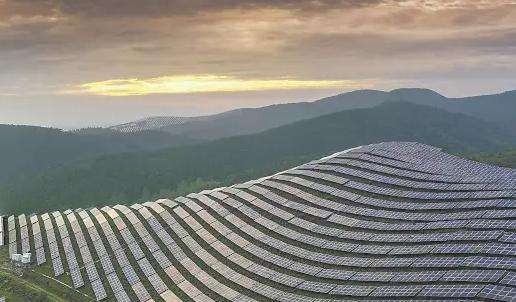Academia and industry generally believe that the development of solar cells has entered the third generation. The first generation is monocrystalline silicon solar cells, the second generation is polycrystalline silicon, amorphous silicon and other solar cells, and the third generation of solar cells is compound thin film solar cells such as copper, indium and gallium selenide (CIS is doped with Ga) and thin solar cells. Si film solar cells.
Power generation in crystalline silicon and thin films. Who will be the future king of solar cells?
The wind is not as good and the rain is more fun. Hello everyone. Here's the editor of Deep Space focusing on eating melon with everyone else. The editor spent a lot of time organizing it and brought you this article. SWithout keeping everyone waiting, let's get to the heart of the matter right away.
Crystalline silicon has been the material of choice for solar cell manufacturers since the 1950s. Compared to other similar materials, crystalline silicon has the highest conversion efficiency and stability, but it also has a flaw, namely transparency. However, South Korean scientists believe they have found a solution: drilling holes in crystalline silicon.
Transparent solar cells can bring enormous benefits to humanity's renewable energy and have a wide range of applications, such as replacing skyscraper windows, car skylights and smartphone screens. In their quest for transparency, scientists have explored different materials and designs of solar cells, but they all involve sacrifices in efficiency, transparency ande long-term stability.
However, scientists at South Korea's Ulsan National Institute of Science and Technology and Korea University believe their new transparent solar cells will make no compromises. Kwanyong Seo, co-senior author of the paper, said: “My team members concluded after extensive testing that crystalline silicon is the best material for developing glassy, high-efficiency, high-stability and high-stability solar cells. neutral in color. is of great use to all of us. It's a crazy idea. The problem is that crystalline silicon is not transparent, so no one before us has tried to make transparent crystalline silicon with neutral color. "
Seo and his team are working on this. A major breakthrough was made when they drilled a series of small holes in the crystalline silicon. To avoid the reddish tint and other colors that characterizedtransparent solar cells in the past, the team drilled holes in the crystalline silicon the size of a human hair to allow light to pass through.
The holes are arranged in an elaborate pattern that is invisible to the naked eye. In testing, the transparent solar cells showed long-term stability and a conversion efficiency of 12.2%. This is still far from the 20 to 25 percent efficiency of commercial solar cells, but it is a significant improvement over the transparent solar cells currently in development.
The research team is also testing the potential application of this transparent solar cell as a window. When tested in low light, conventional solar cells lose about 30% of current. In addition, scientists also found that low-angle light can reduce the current of solar cells by less than 4%.
Seo said: “We hope to replace the existing windows. We have to overcome many difficulties, such as laws and regulations. We also need to have mechanical stability and strength to be able to use our equipment to replace current windows in buildings. "
If you want to know more about "Scientists try to use drilling method to make crystalline silicon in solar cells transparent", please continue to pay attention to the scientific information column and Deep Sky's technology The editor of Deep Sky will continue to We will keep you updated with more technological information Click to try Heart of the King 2
The future. thin film has great potential, and we are even more optimistic about its prospects.
Under current technical conditions, although the film conversion efficiency.s thin mass-produced is lower than that of crystalline silicon, it has good performance in low light and good overall energy production. Is similar. It is used in photovoltaic building integration, agricultural greenhouses, distributed power generation and civil application products.














